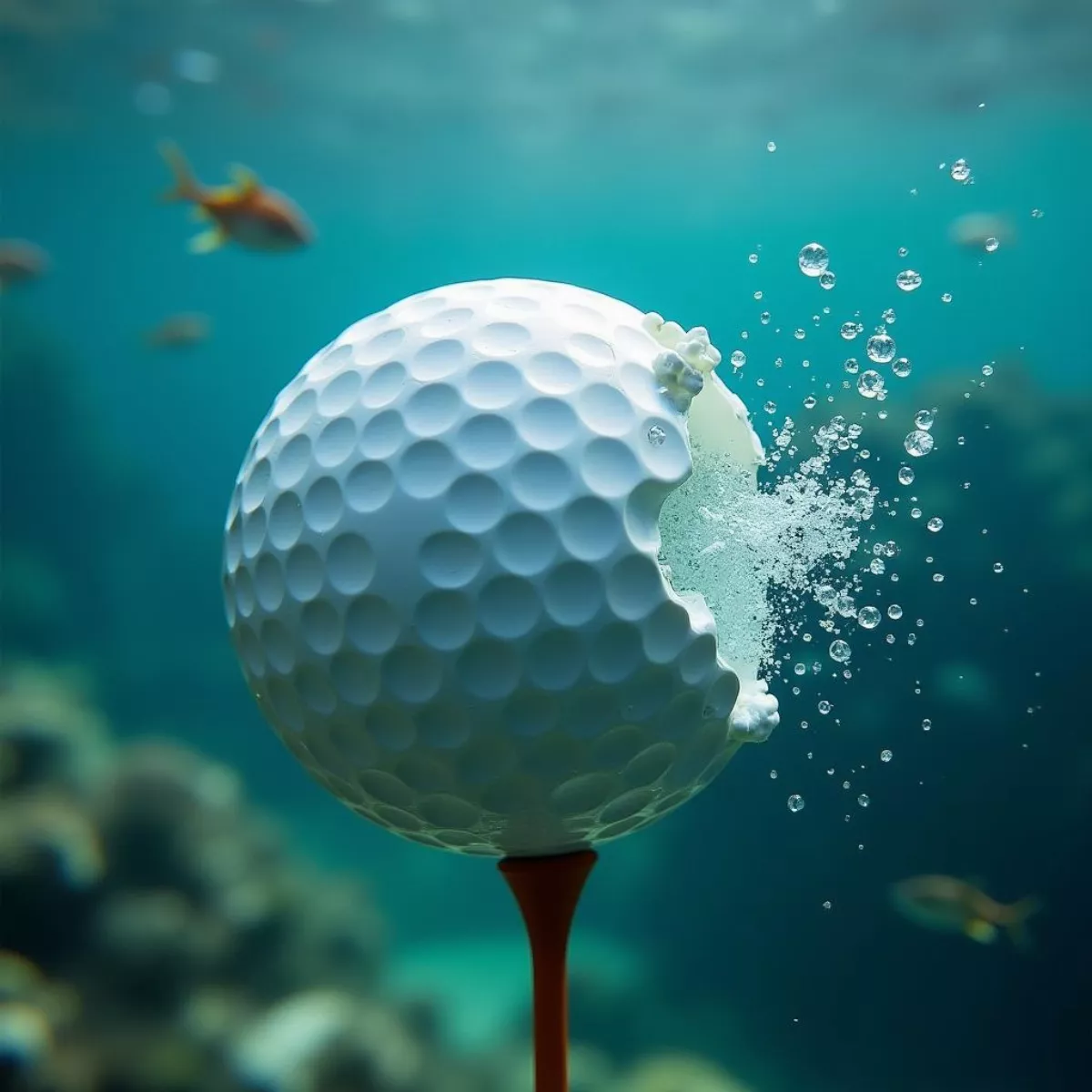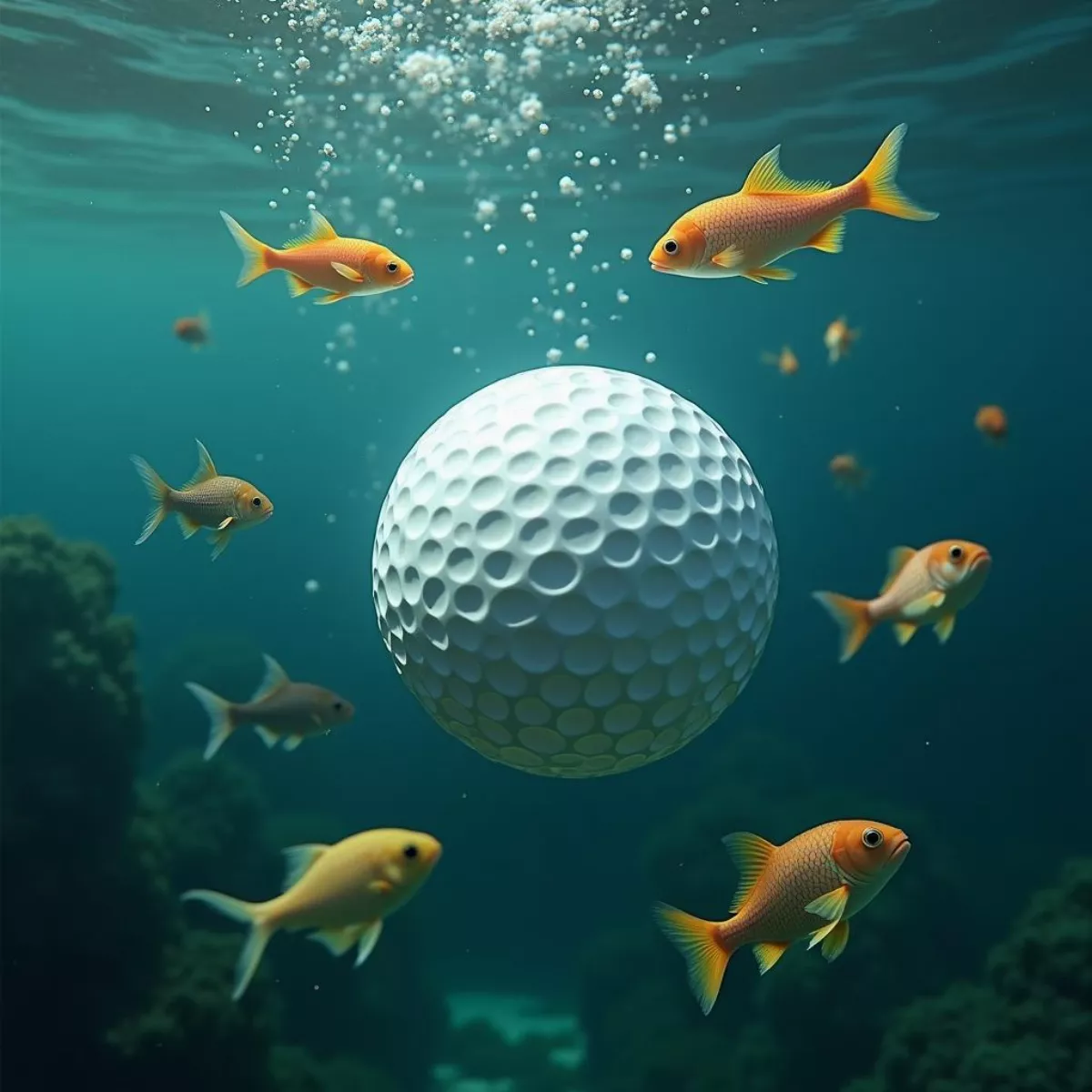Welcome to the fascinating world of biodegradable golf balls! If you’re an avid golfer or just someone who cares about the environment, you might be intrigued by the sustainable shift occurring in the golfing community. Biodegradable golf balls aren’t just a trend; they’re a solution to a problem that many may not realize exists. In this guide, we’ll dive into what biodegradable golf balls are, how they’re made, their ecological impact, and even how they can be transformed into fish food.
What Are Biodegradable Golf Balls?
Biodegradable golf balls are designed to break down naturally in the environment without leaving harmful residues. Traditional golf balls can take hundreds of years to decompose, contributing to pollution in oceans, lakes, and golf courses. On the other hand, biodegradable options are made from materials like cornstarch, plant oils, and other organic substances that decompose much faster—in weeks or months rather than centuries.
Why Switch to Biodegradable Golf Balls?
- Environmental Impact: Traditional golf balls contain synthetic rubbers and plastics that can harm aquatic life when lost in water bodies.
- Sustainability: Using biodegradable golf balls supports eco-friendly practices and reduces plastic waste.
- Fishing Benefits: Some biodegradable golf balls are infused with nutrients, making them appropriate as fish food, providing a dual purpose.
How Are Biodegradable Golf Balls Made?
The manufacturing process for biodegradable golf balls is quite different from that of standard golf balls. Here’s a breakdown of the typical steps involved:
- Raw Material Selection:
- Biodegradable golf balls use materials such as cornstarch, natural rubber, and bio-based polymers.
- Molding and Forming:
- These materials are molded into the shape and structure of a golf ball. Advanced techniques ensure they mimic the performance characteristics of traditional balls.
- Quality Testing:
- Each ball undergoes rigorous testing to assess durability and performance variables like compression and spin.
- Integration of Nutrients:
- Some brands add fish attractants or nutrient blends into the golf ball design, making them ideal fish food once they decompose in water.
 Biodegradable Golf Ball Production Process
Biodegradable Golf Ball Production Process
Table: Comparison of Biodegradable Golf Balls vs. Traditional Golf Balls
| Feature | Biodegradable Golf Balls | Traditional Golf Balls |
|---|---|---|
| Decomposition Time | Weeks to months | Hundreds of years |
| Environmental Safety | Low impact, eco-friendly | High impact, harmful to ecosystems |
| Fishing Benefits | Can provide nutrients for fish | No environmental benefit |
| Material Composition | Organic materials (cornstarch, rubber) | Synthetic rubber and plastic |
| Cost | Slightly higher than traditional | Generally lower in price |
The Ecological Impact of Biodegradable Golf Balls
How Do They Break Down?
Biodegradable golf balls rely on natural elements to decompose. When submerged in water or buried in earth, they undergo a process facilitated by microorganisms like bacteria and fungi. These organisms consume the materials, breaking them down and returning nutrients to the ecosystem.
Benefits for Aquatic Life
When released into aquatic environments, biodegradable golf balls can:
- Provide Food: As they decompose, they release organic materials that serve as potential food sources for fish and other aquatic creatures.
- Create Habitat: The remnants can sometimes serve as a foundation for microhabitats.
- Maintain Water Quality: By avoiding harmful plastics and chemicals, these golf balls help maintain clearer waters.
 Biodegradable Golf Ball Decomposing Underwater
Biodegradable Golf Ball Decomposing Underwater
Tips for Using Biodegradable Golf Balls Effectively
Switching to biodegradable golf balls is simple but requires a few tips to ensure maximum benefits:
- Dispose Properly: After use, avoid discarding biodegradable balls in landfills; instead, place them in compost bins or dispose of them in suitable environments.
- Use in Natural Water Bodies: Ideal for fishing enthusiasts, you can intentionally use them near fish habitats to enhance the local ecosystem.
- Educate Others: Share the importance and benefits of these sustainable balls with fellow golfers or friends involved in ecology.
Can You Use Biodegradable Golf Balls for Fish Food?
Absolutely! This innovative approach not only solves the problem of pollution but provides a means to support local fish populations. Here’s how:
- Selecting the Right Brand: Ensure the golf balls are designed specifically for decomposition and fish attraction. Some reputable manufacturers include nutrients that attract fish.
- Essential Usage: Use them during fishing trips—toss a few into your fishing spot to encourage fish presence.
- Eco-Conscious Fishing: By using biodegradable golf balls as fish food, you promote a greener alternative to traditional fishing practices.
 Fish Gathered Around Biodegradable Golf Ball
Fish Gathered Around Biodegradable Golf Ball
Key Takeaways
- Biodegradable golf balls are a sustainable choice that decomposes quickly, reducing long-term environmental impact.
- They can serve as fish food, providing an innovative way to support aquatic ecosystems.
- Proper disposal and usage can amplify their benefits—think composting rather than tossing.
- Educating others about these environmentally friendly options can lead to greater acceptance and usage within the golfing community.
Frequently Asked Questions (FAQs)
- How long does it take for biodegradable golf balls to decompose?
- Generally, biodegradable golf balls decompose within weeks to months, depending on environmental conditions.
- Are biodegradable golf balls more expensive than regular ones?
- They can be slightly higher in price, but the benefits to the environment often outweigh the cost.
- Can I use biodegradable golf balls in saltwater?
- Yes, biodegradable golf balls are effective in both freshwater and saltwater environments.
- Do all manufacturers produce eco-friendly golf balls?
- No, not all manufacturers prioritize sustainability, so it’s important to choose brands focused on eco-friendly practices.
- Can fish get sick from eating biodegradable golf balls?
- No, the materials used to make biodegradable golf balls are safe for fish and do not present health risks.
- Are biodegradable golf balls as effective as traditional golf balls?
- Many biodegradable options mimic the performance standards of traditional golf balls but check the specifics of each brand.
- Where can I buy biodegradable golf balls?
- They can be found in sports stores and online merchants specializing in eco-friendly products.
- What happens if I lose a biodegradable golf ball?
- Ideally, they will break down and contribute positively to the environment. But ensure you use balls with non-toxic materials.
- Can I use leftover biodegradable golf balls as compost?
- Yes, they can be disposed of in compost bins where they’ll break down and enrich the soil.
- Do biodegradable golf balls affect water quality?
- No, their decomposition does not cause water pollution; rather, they help improve the aquatic ecosystem.
By embracing biodegradable golf balls, not only do you enhance your golfing experience, but you also contribute to environmental conservation. So, tee off with a greener mindset and enjoy the dual benefits these innovative products have to offer!

